Priority situation with bicycle track proves matter for discussion
It unexpectedly turned out to trigger plenty of reactions: the film posted by Cursor last week on Facebook which showed the traffic volume at the crossing of Den Dolech and the slow lane for bicycles. And it aroused a discussion: who has right of way? For the record: traffic experts are unanimous.
One thing is clear: cyclists coming towards you from left or right along the slow lane have right of way anyhow. Still, what about motorists and cyclists driving or riding onto the campus from Kennedylaan, with the motorist wishing to continue straight on at the said crossroads, while the cyclist intends to turn left? Is this a situation where ‘straight on along the same road has priority’, i.e. the motorist? Or does the situation change because the cyclist changes direction in a split second?
However you look at it, it is “a particular spot”, says Thijs Haenen in a reaction on Facebook, also because of the separation (by means of bollards) between the main road and the cyclist roadway. That lane then “crosses a priority road, namely the continuous cycle track running from right to left, on which cyclists merge before crossing the roadway of the cars. That has always led me to regard this situation as one where cyclists have right of way over motorists”.
Haenen refers among other things to the Wegenwiki (online traffic encyclopedia) for the differences between bicycle lanes and (compulsory and optional) bicycle tracks and their different user regulations. Wouter van Oorschot, who concurs with Haenen, keeps it simpler and points to the give-way road markings for motorists. “It cannot be made much clearer, I think – all cyclists have right of way”.
Poll
However, this is not abundantly clear to all and sundry, witness the outcome of Cursor’s later Facebook poll: out of 1020 respondents there are 559 saying that motorists have right of way, as against 461 voters in favor of cyclists. Joris van der Sanden is among the former group: "Straight on has priority over traffic turning left. Not until the bicycle track is ten meters away from the roadway for cars, can you regard it as another road". That cyclists turn left straight away nonetheless is caused, as he thinks, by the fact that cars stop already for crossing cyclists who do have right of way. "This leads to a misunderstanding in which cyclists riding parallel to the cars are given the impression that motorists are stopping for them and that they can thus go first."
Joost Katoen also sticks to ‘straight on along the same road has priority’ and assumes that the initial direction of road users is leading in this respect. “Cyclists make a deviating maneuver by turning left and therefore have to give priority to the motorist continuing along the way.” Thom Bindels latches on to this approach: “The problem here is mainly that cyclists are more agile and can merge with the flow faster, so that motorists have no other option than to wait”. According to Bram van der Sanden the whole situation would already "become considerably less awkward if cyclists would indicate direction on occasion".
Not black and white
Thijs Mooren from TU/e’s Real Estate Management also thinks that cars deserve right of way – although he does not seem to be fully convinced of his view. He also observes that traffic rules are in many cases indicative rather than decisive: “Traffic is often not black and white”. In any case, Mooren does not venture to give a final ruling for this specific case; he refers to the Fietsersbond (Cyclists’ Union).
Peter Nuiten from the Eindhoven section of this union speaks of “a tricky point”. Nevertheless he does not doubt who should get priority: motorists. "For traffic continuing along the same road has priority over traffic turning left. Motorists who drive onto the campus from Kennedylaan and want to go straight on, while cyclists riding next to them want to cross before them and turn left, have right of way in principle. Note: in principle. For if motorists are stopping anyway because they have to give priority to crossing traffic, and cyclists coming from the same direction see an opportunity as a result, then they can pass."
A spokesman for the municipality of Eindhoven, who presented the situation to a traffic expert, confirms Nuiten’s point of view. "The bicycle track is located within five meters from the roadway, and hence forms part of the road. And then the rule is: straight on along the same road has priority."
Nuiten does not wish to hide behind the theory altogether, though, and above all advocates consideration for one’s fellow road users. He adds that the main ‘rule’, when talking about priority situations, should always be: “Priority should be yielded, not taken. And that goes for cyclists as well. Motorists waiting should also be given the opportunity now and then to continue.”
Fifteen hundred kilos of steel
Still, as he also sketches: “As a motorist you are encased in fifteen hundred kilos of steel amidst other people, which comes with greater power and greater responsibility. Moreover, many motorists coming from Kennedylaan have just been able to drive seventy kilometers an hour or faster. Then they move onto the campus, a designated area, where there are people walking and cycling and where other social rules actually apply. So on that short stretch between Kennedylaan and the said crossing, motorists should adopt another mental attitude.”
Below you can read a selection of reactions to Facebook in Dutch (click for a blow-up).
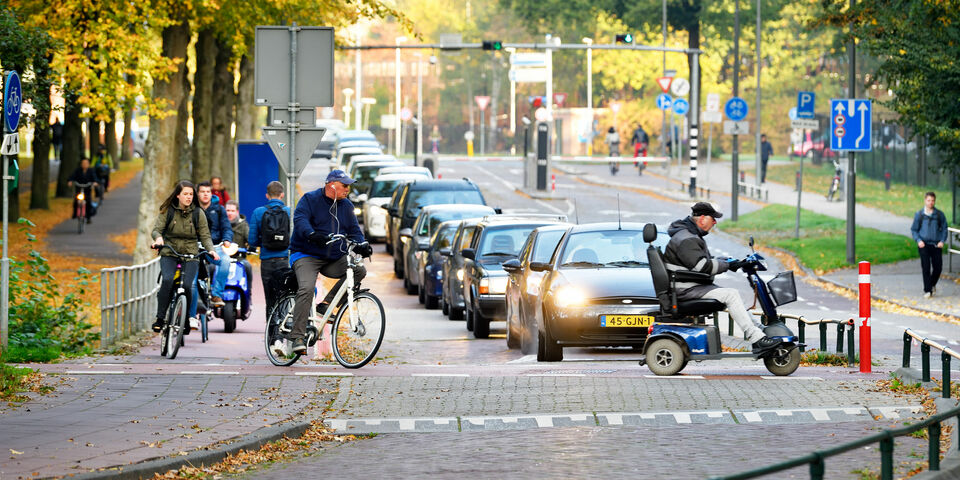

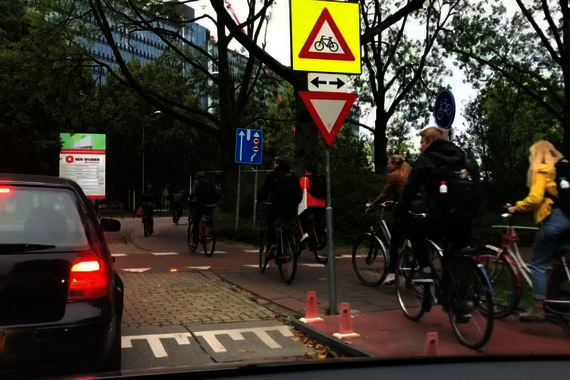
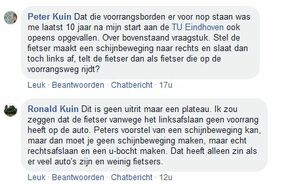
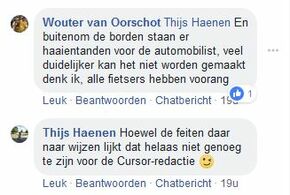


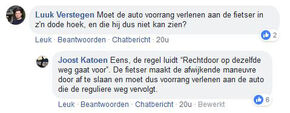
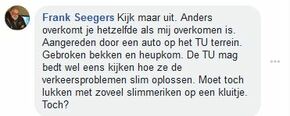
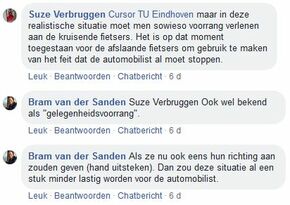
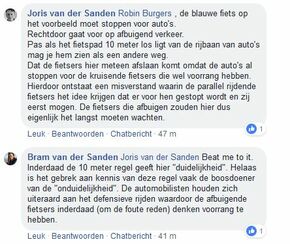
Discussion